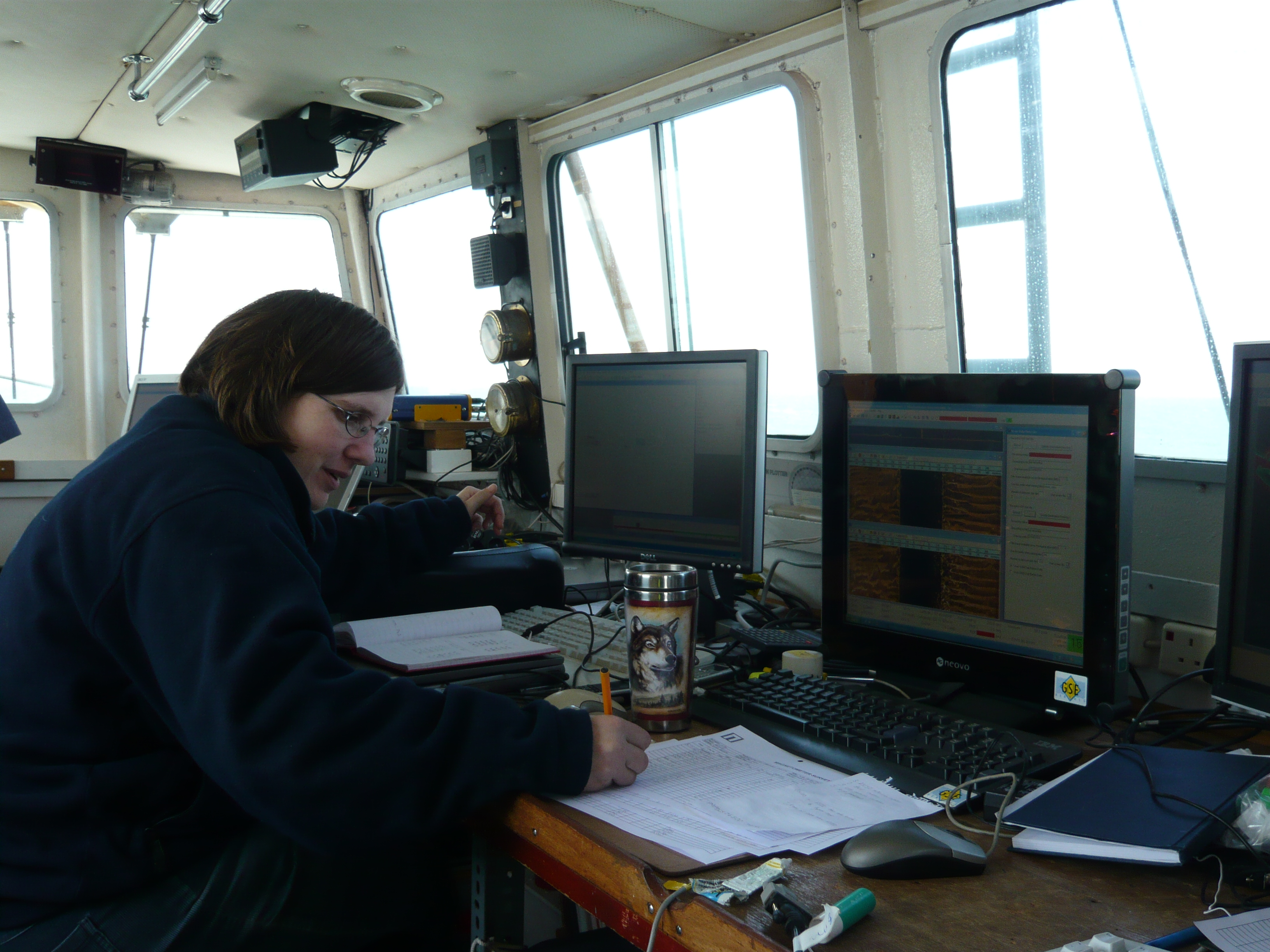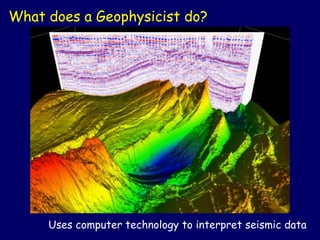All Categories
Featured
Table of Contents
- – Geophysical Survey Methods in Applecross Aust...
- – Introducing Geophysical Surveying in Bentley...
- – What Is A Seismic Survey? in Koondoola Austr...
- – Geophysicist - Salary, How To Become, Job D...
- – What Are Geological, Geochemical, in Kingsl...
- – Geophysical Survey in Craigie Western Aust...
- – Geology Careers: Degree Requirements, Cost...
Geophysical Survey Methods in Applecross Australia 2021
doi:10. 1556/AGeod. 45.2010. 2.9. S2CID 122239663. Temple 2006, pp. 162166 Russo, Lucio (2004 ). Berlin: Springer. p. 273277. Temple 2006, pp. 177181 Newton 1999 Section 3 American Geophysical Union (2011 ). "Our Science". About AGU. Retrieved 30 September 2011. "About IUGG". 2011. Obtained 30 September 2011. "AGUs Cryosphere Focus Group". 2011. Archived from the initial on 16 November 2011.
Bozorgnia, Yousef; Bertero, Vitelmo V. (2004 ).; Grenier, Emmanuel (2006 ). Mathematical geophysics: an intro to rotating fluids and the Navier-Stokes equations.
Publication of the Seismological Society of America. 59 (1 ): 183227. Defense Mapping Firm (1984 ).
Introducing Geophysical Surveying in Bentley Western Australia 2022
Obtained 30 September 2011. Eratosthenes (2010 ). For Space Research Study.
Retrieved 30 September 2011. Obtained 30 September 2011.:10.
What Is A Seismic Survey? in Koondoola Australia 2021
The Earth's Electrical Environment. National Academy Press. pp. 232258. ISBN 0-309-03680-1. Lowrie, William (2004 ). Fundamentals of Geophysics. Cambridge University Press. ISBN 0-521-46164-2. Merrill, Ronald T.; Mc, Elhinny, Michael W.; Mc, Fadden, Phillip L. (1998 ). The Magnetic Field of the Earth: Paleomagnetism, the Core, and the Deep Mantle. International Geophysics Series.
They likewise research study modifications in its resources to provide guidance in meeting human needs, such as for water, and to anticipate geological dangers and dangers. Geoscientists use a range of tools in their work. In the field, they might use a hammer and chisel to collect rock samples or ground-penetrating radar equipment to look for minerals.
They likewise might utilize remote sensing equipment to collect data, along with geographic information systems (GIS) and modeling software to evaluate the data gathered. Geoscientists may supervise the work of specialists and coordinate work with other researchers, both in the field and in the lab. As geological difficulties increase, geoscientists might decide to work as generalists.
Geophysicist - Salary, How To Become, Job Description & ... in Wandi WA 2021
The following are examples of kinds of geoscientists: geologists study how consequences of human activity, such as pollution and waste management, affect the quality of the Earth's air, soil, and water. They likewise might work to fix problems connected with natural threats, such as flooding and erosion. study the products, processes, and history of the Earth.
There are subgroups of geologists too, such as stratigraphers, who study stratified rock, and mineralogists, who study the structure and composition of minerals. study the movement and circulation of ocean waters; the physical and chemical properties of the oceans; and the methods these properties impact seaside areas, climate, and weather.
They also research changes in its resources to supply assistance in meeting human needs, such as for water, and to forecast geological risks and threats. Geoscientists utilize a variety of tools in their work. In the field, they might utilize a hammer and sculpt to collect rock samples or ground-penetrating radar devices to look for minerals.
What Are Geological, Geochemical, in Kingsley Aus 2020


They likewise may utilize remote picking up equipment to gather data, in addition to geographic info systems (GIS) and modeling software application to examine the information gathered. Geoscientists may supervise the work of professionals and coordinate work with other researchers, both in the field and in the laboratory. As geological difficulties increase, geoscientists may choose to work as generalists.
The following are examples of kinds of geoscientists: geologists study how repercussions of human activity, such as pollution and waste management, affect the quality of the Earth's air, soil, and water. They likewise may work to solve problems connected with natural dangers, such as flooding and erosion. study the materials, procedures, and history of the Earth.
There are subgroups of geologists as well, such as stratigraphers, who study stratified rock, and mineralogists, who study the structure and structure of minerals. study the movement and flow of ocean waters; the physical and chemical residential or commercial properties of the oceans; and the ways these homes impact seaside areas, environment, and weather condition.
Geophysical Survey in Craigie Western Australia 2023
They likewise research study modifications in its resources to supply assistance in meeting human needs, such as for water, and to predict geological risks and dangers. Geoscientists utilize a range of tools in their work. In the field, they may use a hammer and chisel to collect rock samples or ground-penetrating radar devices to browse for minerals.
They likewise may utilize remote picking up equipment to gather information, in addition to geographic information systems (GIS) and modeling software application to evaluate the information collected. Geoscientists might supervise the work of technicians and coordinate deal with other scientists, both in the field and in the laboratory. As geological difficulties increase, geoscientists might opt to work as generalists.
The following are examples of kinds of geoscientists: geologists study how consequences of human activity, such as pollution and waste management, impact the quality of the Earth's air, soil, and water. They also may work to solve problems connected with natural risks, such as flooding and disintegration. study the materials, procedures, and history of the Earth.
Geology Careers: Degree Requirements, Cost & Salary in Connolly Australia 2021
There are subgroups of geologists too, such as stratigraphers, who study stratified rock, and mineralogists, who study the structure and composition of minerals. study the motion and blood circulation of ocean waters; the physical and chemical properties of the oceans; and the methods these properties impact coastal areas, climate, and weather.
Table of Contents
- – Geophysical Survey Methods in Applecross Aust...
- – Introducing Geophysical Surveying in Bentley...
- – What Is A Seismic Survey? in Koondoola Austr...
- – Geophysicist - Salary, How To Become, Job D...
- – What Are Geological, Geochemical, in Kingsl...
- – Geophysical Survey in Craigie Western Aust...
- – Geology Careers: Degree Requirements, Cost...
Latest Posts
Geophysical Surveys Definition & Meaning In Stock ... in Murdoch Oz 2023
About Environmental Geophysics in Middle Swan Aus 2022
Geophysicist Job Description in Australia 2021
More
Latest Posts
Geophysical Surveys Definition & Meaning In Stock ... in Murdoch Oz 2023
About Environmental Geophysics in Middle Swan Aus 2022
Geophysicist Job Description in Australia 2021